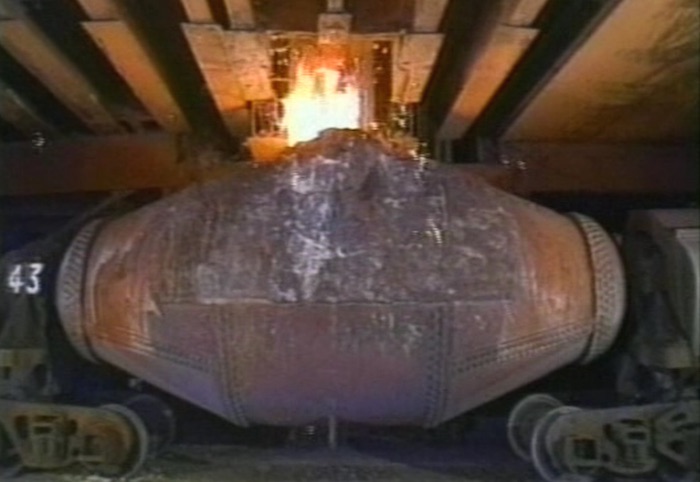In modern steelmaking operations, the need for lower sulfur steels demanded by modern continuous casting operations and specialty applications has increased calcium carbide's appeal as a hot metal desulfurizer.

As late as 2002, most blast furnace iron was desulfurized in the torpedo car as shown above. In the integrated steel mill, this practice has now been largely replaced by the use magnesium to remove an initial amount of sulfur in the transfer ladle, and the use of carbide as a steel ladle deoxidizer and slag conditioner to obtain the final sulfur specification.
In ductile iron foundries, liquid iron must be desulfurized before specialized inoculation treatments can be employed. This desulfurization is frequently performed by feeding granular forms of calcium carbide onto the surface of the liquid iron, which is contained in specially designed mixing units.
Purity and particle size are the key parameters for optimum effectiveness in these applications. Particle sizing is carefully selected to provide maximum contact with carbide particles without incurring excessive dust losses.
Carbide Industries manufactures three standard sized products for ductile iron desulfurization, generally within the range of 8 to 80 US-mesh (2.5 to 0.2 mm). In addition, two patented specialty products are available to meet specific customer requirements. These specialized products are formulated to help eliminate the retention of unreacted carbide in the resulting desulfurization slags and also to minimize slag odor.
For subsurface injection, a powdered carbide is manufactured by ball milling selected sizes of carbide to less than 140 US-mesh (<105 microns). The milled carbide can then be custom blended with a wide range of other powder additives, such as lime, limestone, and fluorspar to meet customer specified formulations. The milled carbide is treated with special additives to significantly improve flow characteristics.
Because of their reactivity, calcium carbide powders are manufactured, mixed, loaded, and transported in either 20 ton pressure differential trailers or 90 ton railcars, under an inert nitrogen atmosphere.